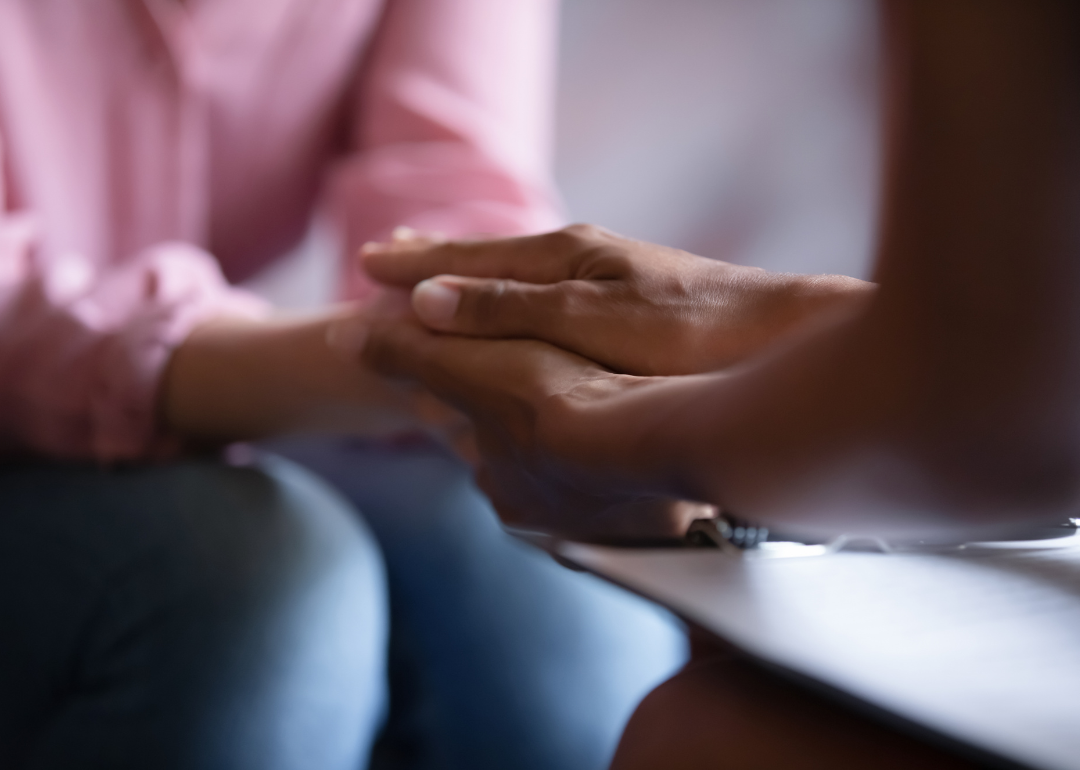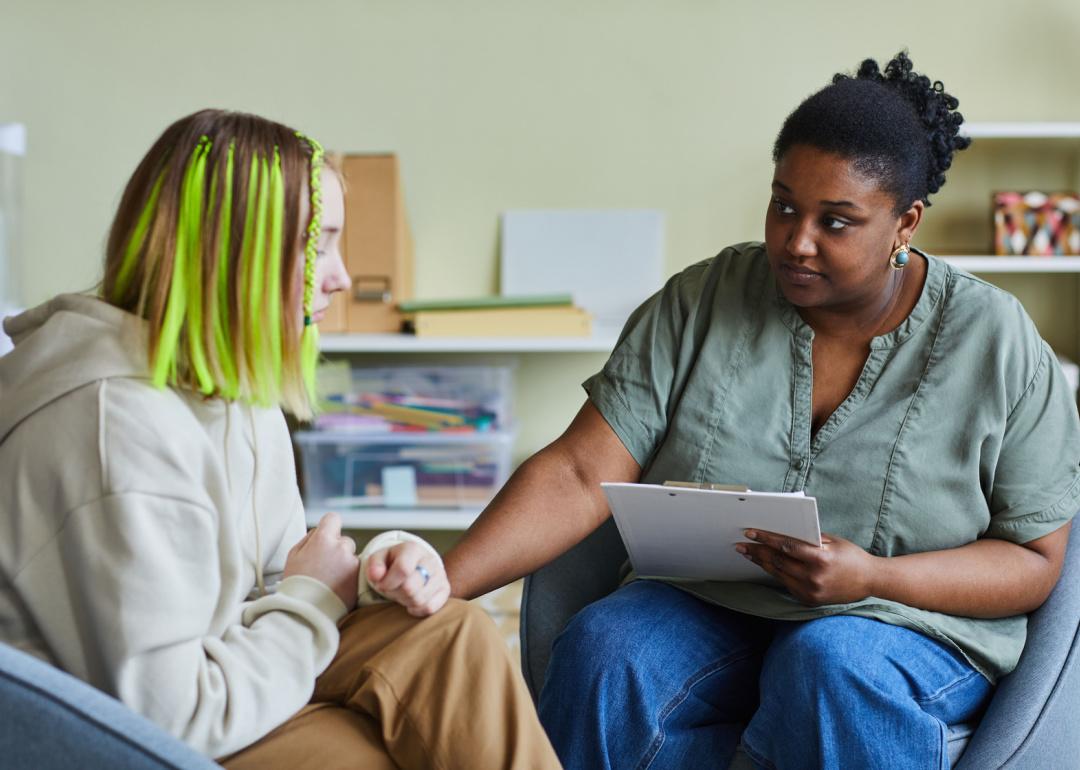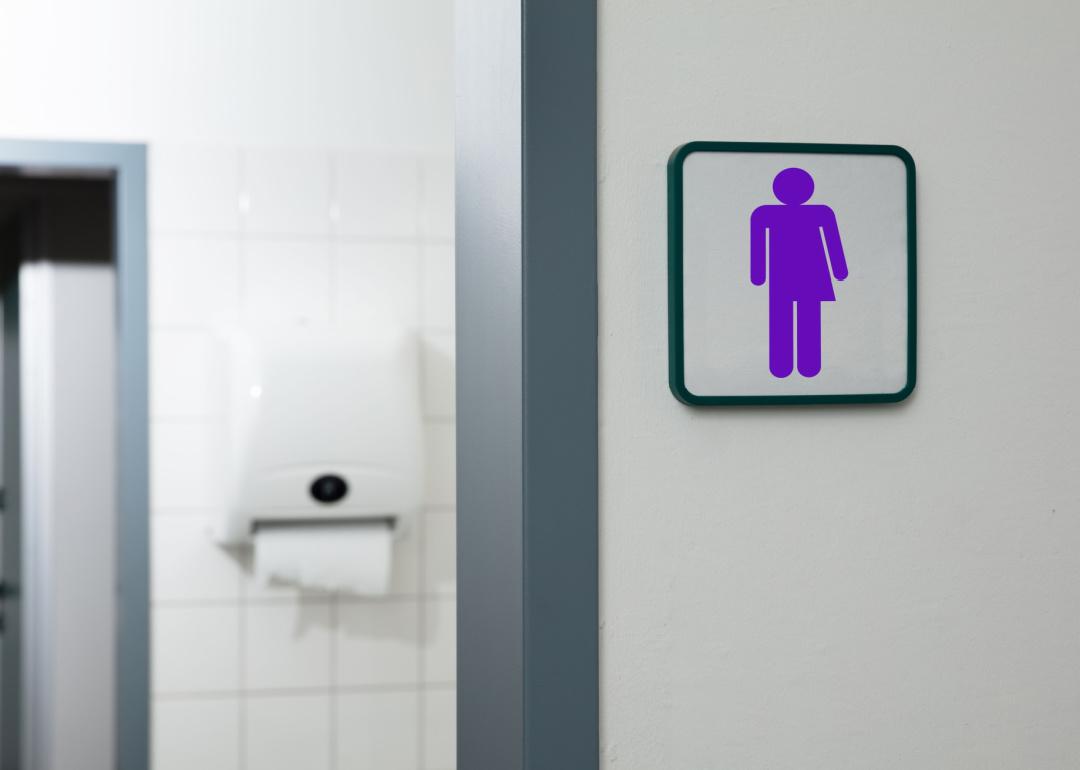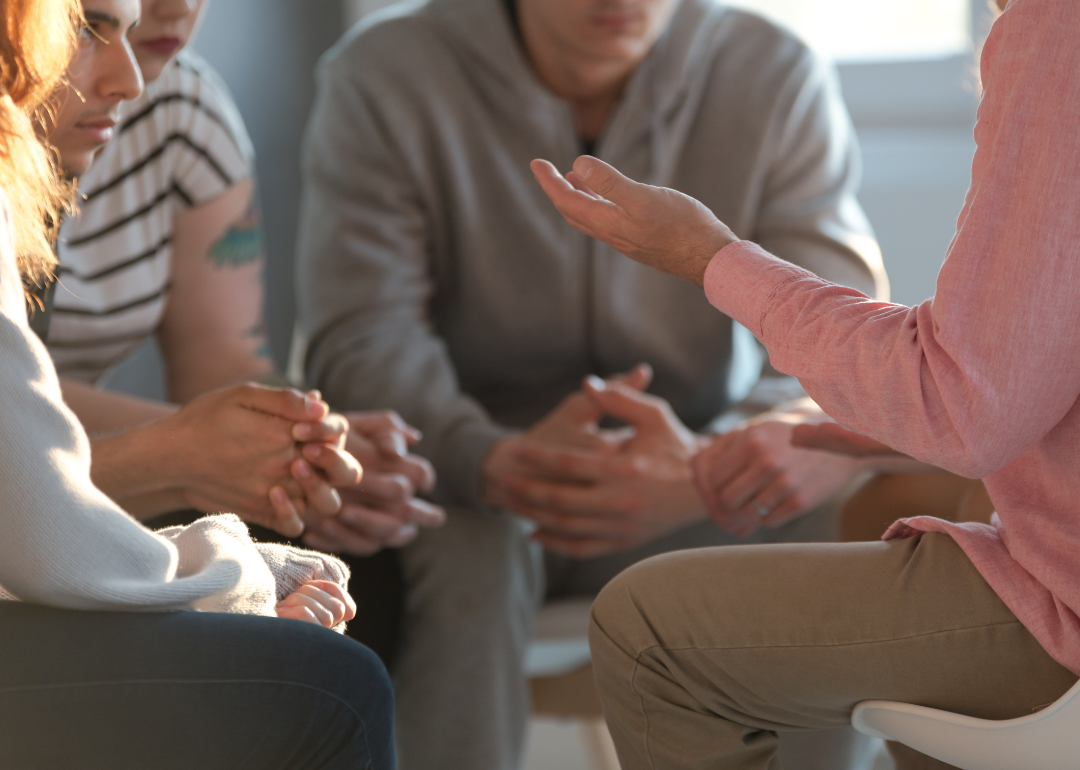6 stats you need to know about LGBTQ+ youth mental health

Canva
6 stats you need to know about LGBTQ+ youth mental health
A young person stands still in a corridor and blurred images indicate others moving around them.
2023 has become the most aggressively anti-LGBTQ+ period on record from a legislative standpoint.
Of the more than 520 anti-LGBTQ+ bills that have been introduced within state legislatures since the beginning of the year, more than 145 have passed in at least one legislative chamber, according to the LGBTQ+ civil rights organization Human Rights Campaign. At least 70 statutes were passed into law—15 of which specifically ban gender-affirming medical care for transgender youth.
The Centers for Disease Control and Prevention’s 2011-2021 Youth Risk Behavior Survey found that LGBTQ+ high school students were “significantly more likely to experience all forms of violence” than their peers. Almost 70% reported having “persistent feelings of sadness or hopelessness,” and the systemic targeting of their greater community in the form of legislative action has been one of the primary factors contributing to an increase in psychological and psychiatric illnesses among LGBTQ+ children, adolescents, and young adults.
The CDC’s statistics coincide with a recent survey conducted by The Trevor Project, a nonprofit organization that provides professional counseling for LGBTQ+ youth who are at risk of self-harm or suicide. For the fifth consecutive year, this survey gathered vital information about the mental state of more than 28,000 people ages 13 to 24 who identify as LGBTQ+. The findings were alarming: “Sixty percent of LGBTQ young people reported that they have felt discriminated against in the past year due to their sexual orientation or gender identity,” while 27% of trans and non-binary respondents said they had been physically threatened or harmed in that same time frame.
To look more closely at the current state of youth mental health in this besieged community, Northwell Health partnered with Stacker to compile a list of statistics related to LGBTQ+ youth mental health using data from The Trevor Project’s 2022 National Survey on LGBTQ Youth Mental Health.
The organization’s CEO and executive director, Amit Paley, affirms the national survey “is one of the most diverse” ever conducted on LGBTQ+ youth—45% of respondents are “of color,” and 48% identify as transgender or nonbinary. [Editor’s note: The Trevor Project employs the term “LGBTQ” to encompass the surveyed community; for the purposes of this report, the commonly used “+” was added in order to recognize the “totality of possibilities” as experienced by individuals within this group.]
![]()

fizkes // Shutterstock
Nearly half of LGBTQ+ youth seriously considered suicide in the last year
Closeup therapist expressing empathy and support.
According to the Trevor Project, “LGBTQ+ youth are not inherently prone to suicide risk.” Rather, their gender identity or sexual orientation increases threats because of how they are “mistreated and stigmatized in society.” Black youths are more vulnerable, and the risk is even greater among Black transgender and non-binary teenagers and young adults.
Those subjected to conversion therapy often report seriously considering suicide. The Trevor Project, therefore, directs its advocacy work to youth subjected to these treatments that human rights organizations and medical and mental therapists and organizations diametrically oppose.

Rawpixel.com // Shutterstock
73% of LGBTQ+ youth experienced symptoms of anxiety; 58% had symptoms of depression
Teen comforting friend outside.
Increased anti-LGBTQ+ rhetoric has contributed to deteriorating the mental health of the community’s younger members. Anxiety and depression are a constant struggle for LGBTQ+ people, who report that symptoms worsen when derogatory or discriminating comments come from authorities or policymakers.
Mental health challenges correlate with social factors such as family, friends, and classmates. According to the CDC, LGBTQ+ youth face high risks of being bullied at school, dating violence, and rape, among other traumatic events.
Recognizing the higher risk for LGBTQ+ students, the American School Counselor Association issued guidelines to address barriers that harm LGBTQ+ students’ development and achievements, including encouraging school counselors to proactively advocate for inclusion and confront victimization on campus.

Darren Baker // Shutterstock
From 2020 to 2022, rates of LGBTQ+ youth considering suicide and experiencing symptoms of anxiety, depression rose
Portrait of LGTBQ+ youth with serious expression.
The COVID-19 pandemic was a challenge for most of the world’s population. Over half of LGBTQ+ youth in the U.S. stated that their mental health deteriorated during and after the health crisis. The Trevor Project’s survey shows a consistent increase in suicidal thoughts and symptoms related to anxiety and depression in the past two years. Nevertheless, the pandemic might have been only one of the causes.
Mental distress in LGBTQ+ youth can be mitigated by implementing affirming, accepting, and empathetic approaches in homes, schools, colleges, and other social settings. The CDC recommends educating the community at large—especially adults who act as role models—about the needs of LGBTQ+ kids and young adults, in order to provide a safe and understanding environment. This is particularly important when facing psychologically demanding times.

SeventyFour // Shutterstock
60% of LGBTQ+ youth desiring mental health care couldn’t obtain it
School psychologist supporting teen.
Although LGBTQ+ youth may feel anxious, depressed, or suicidal, most understand the importance of mental health care. Unfortunately, the majority report not having access to it.
The World Health Organization warns that undiagnosed and untreated mental illnesses will worsen without professional aid. The WHO also points to the fact that continuous symptoms lead people to self-medicate, which can lead to abusing drugs or alcohol. The younger people start consuming drugs, the higher their risk of developing addiction and other related mental disorders.
Though not a replacement for continued, personalized care from a mental health professional, several organizations connect LGBTQ+ youth to free counseling, mental health support, and suicide prevention help, including the LGBT National Youth Talkline (1-800-246-7743), TrevorText (text “start” to 678-678), and Trans Lifeline (877-565-8860).

Andrey_Popov // Shutterstock
93% of LGBTQ+ youth said they were worried about being denied access to gender-affirming care and 91% said they were worried about being denied access to bathrooms
Sign for a gender neutral public restroom.
The concerns expressed by LGBTQ+ youth are well justified. Indiana’s governor signed a bill in April 2023 prohibiting minors from receiving gender-affirming health care in the state. The law takes effect on July 1, while children and teenagers already receiving medication must end treatments by the end of the year.
The Human Rights Campaign condemned the North Dakota House of Representatives after it passed seven different bills in January and February 2023 prohibiting transgender children and teenagers from identifying as such in public and legal documents. This “Slate of Hate” also restricts the use of an array of facilities, such as gym showers and restrooms, compatible with a trans person’s gender identity. Initiatives like The Human Rights Campaign focus on LGBTQ+ equality and inclusion through policy advocacy and tracking anti-trans legislation.

Ground Picture // Shutterstock
Suicide rates among LGBTQ+ youth are lower when they feel that their home and school are gender-affirming spaces and receive support from friends and family
Therapist talking to a group of teenagers.
The 2022 survey reveals nearly 20% of LGBTQ+ youth believe their community is “somewhat or very unaccepting of LGBTQ people.” According to UCLA’s Williams Institute, transgender people are four times as likely to experience violence in their lifetime as cisgender people.
Parental acceptance is vital to the mental health of any child or young adult, particularly to LGBTQ+ youth. The rest of the family and community also play decisive roles in their development and inclusion. Suicide, depression, and anxiety are drastically reduced when they are met with visibility, support, and inclusion from the people around them. That’s also the mission behind the It Gets Better Project, which helps LGBTQ+ youth feel that they’re not alone through a global community that shares stories of their own struggles and experiences.
Story editing by Brian Budzynski. Copy editing by Nicole Caldwell.
This story originally appeared on Northwell Health and was produced and
distributed in partnership with Stacker Studio.